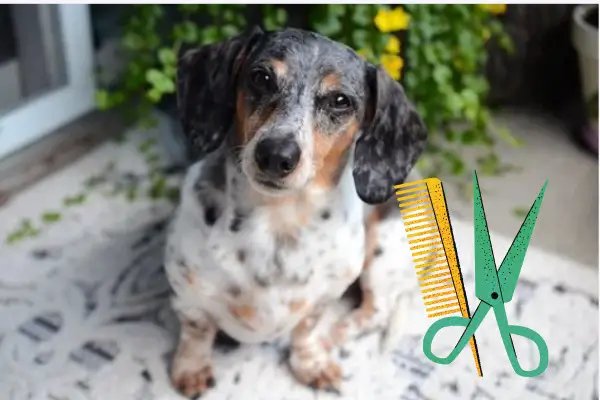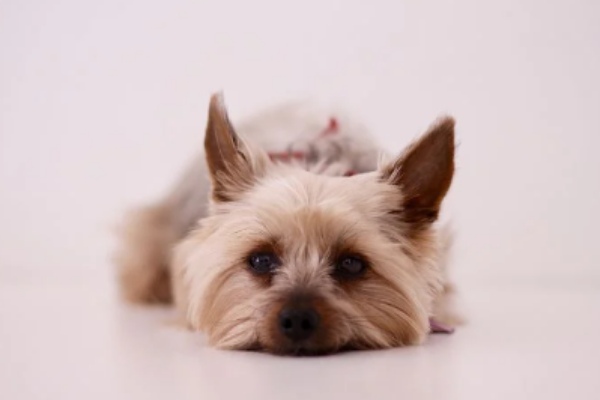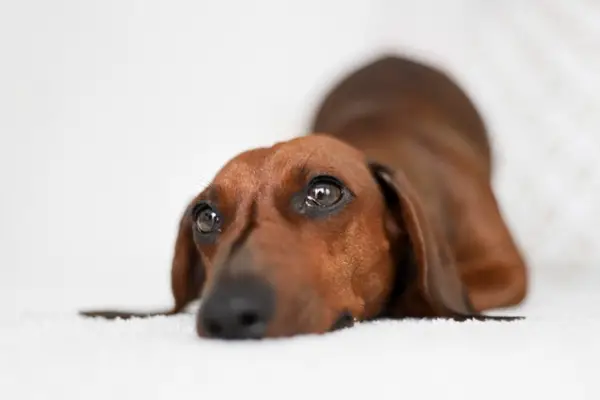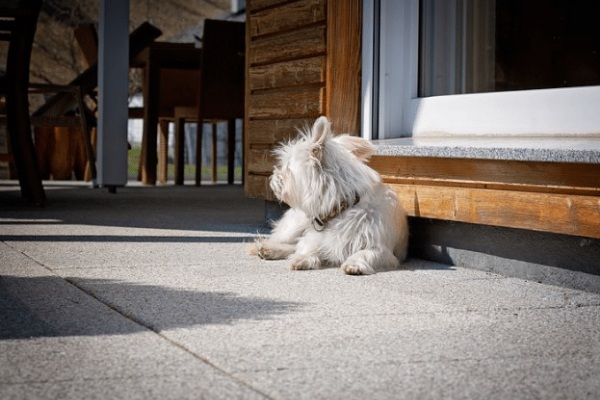Do Dachshunds Shed: 8 Shedding Causes With Control Tips

Every dog that has fur sheds, but what matters is the quantity of fur they shed, so do dachshunds shed? Join me let’s find out together.
We will outline and discuss some common reasons why dachshunds may shed more than the usual shedding.
Although there are no proven strategies to totally stop dogs from shedding, there are several habits that can help prevent excessive shedding, which we will discuss in this article.
Let me answer your question do dachshunds shed then we proceed with other things.
So…
Do Dachshunds Shed
Yes, dachshunds shed throughout the year, however, their shedding rate is quite low when compared to other dog breeds. Spring and fall are when they shed the most, with spring being when they shed the most.
While all dogs shed to some extent, it is a necessary natural process that protects their skin and helps them maintain their body temperature.
The good news about dachshunds is that when properly maintained, they are considered a low-shed breed.
Now that we’ve established that dachshunds shed, but the pace at which they shed varies depending on a variety of conditions, let’s look at why the rate of shedding could be increasing.
So…
What are the causes of excessive shedding in dachshunds
The following are some of the most common causes of excessive shedding in dachshunds to be aware of:
1. A continuous rise in body temperature
Excessive shedding occurs when a dachshund’s body temperature rises over average (101 to 102.5 degrees Fahrenheit).
As a result, don’t overwork your dachshund; a daily stroll of 15 minutes should suffice. You’ll have hair all over your house if you overwork them in hot weather.
Keep a close check on their temperature and keep them away from anything that might cause it to rise. A nice example is playing with your dachshund in the heat of the day.
A rise in body temperature may induce respiratory difficulties, leading to profuse shedding, due to their size.
2. Time of the year
Because the rate or degree of shedding is typically affected by seasonality, one of the main causes of dachshund shedding is the season.
There will be a lot more dachshund hair droppings in the spring than there were in the winter.
As a result, it’s plausible to believe that dachshund shedding is affected by the season.
Dachshunds shed their hair in the summer to strengthen their winter coats, then re-grow it in the spring to avoid overheating.
In the spring, keep your dachshund’s temperature down since warm weather causes them to sweat less.
You’ll be amazed at how much your dachshund sheds if you don’t look after it throughout the summer.
3. Fluctuations of hormones
Remember that hypothyroidism is a hormonal condition that causes considerable hair loss in dogs.
It affects the dachshund’s thyroid glands, resulting in a thyroxine deficit, a hormone that controls metabolism.
Hair loss, a dull and thin coat, discolored skin spots, weariness, a lack of interest in exercise, and weight gain are all symptoms of this illness.
If your female dachshund isn’t spayed, her heat cycles may have an influence on how much fur she loses at any one moment.
At the conclusion of her periods, you could notice her shedding more hair.
All of these causes of hair loss are referred to as hair loss caused by hormone fluctuations.
Here is the list of small dogs that shed less.
4. Poor nutrition
If a dachshund’s food isn’t balanced, his or her hair will fall out. Poor diet has the same effect on dachshunds as it does on humans.
If you detect any unusually excessive shedding after changing your dachshund’s diet, switch back or consult a veterinarian, whether it’s winter or spring.
Balanced dog food contains the minerals and vitamins required to maintain healthy skin, strong hair follicles, and minimal discharges.
Omega-3 fatty acids have been proved to help dogs grow healthy hair, so including them in their diet is always a good idea.
Dry skin or dehydration can cause undesired hair loss in dachshunds, thus moist food is essential in their existence.
5. Allergies
Because of allergies to certain foods or pollutants in the environment, a dachshund’s skin may become irritated and shed.
Your dachshund may scratch, lick, or bite himself as a result of the allergy, causing significant hair loss.
Food, dust, medicine, and insect stings are some of the factors that might cause allergies in dachshunds.
When a dachshund comes into contact with anything they are allergic to, their hair falls out as a result of an allergic reaction on their skin.
This is a rare sort of shedding that occurs only sometimes. If you discover any allergy triggers, keep them out of your dachshund’s reach.
6. Pest or parasite infestations
Fleas, mites, and lice can infect dachshunds that go outside, but they shed a lot as a result of the infestation.
A single bite from one of these insects can result in a variety of problems, including excessive shedding.
Bug bites annoy dachshunds, and this bite may result in shedding, despite the small amount of shedding.
If your dachshund has a parasite, she will continue to shed it until the parasite has been eliminated.
As a result, the dog will be itchy and scratched, sometimes resulting in bald patches.
Flea bites in your dachshund can cause serious allergic responses which can lead to unnecessary shedding, so keep him away from them.
7. Effects of medications
If you give your dachshund medications and it immediately begins shedding, the medication’s adverse effects might be contributing to the excessive shedding.
Certain drugs, on the other hand, may cause your dachshund to scratch and shed excessively as a result of irritation or scaling.
Your dachshund may over-groom herself due to sickness or side effects of medication, resulting in baldness.
Consult your veterinarian to discover if any of your dachshund’s medications are contributing to her excessive shedding.
8. Excessive stress
Dachshunds sweat a lot because canines with too much stress lose their hair, and the dachshund is no different.
When a dachshund is overworked, hormonal shifts occur often, resulting in excessive or infrequent discharges.
For the same reason, you’ll notice that your dachshund starts flinging hair more frequently when things get extremely fascinating.
When you return home from a trip, for example, you realize that there are hairs all over the place.
As a result, separation anxiety, despair, and other negative emotions are always linked to stress-related dog hair loss.
Since you can’t completely stop shedding in dachshunds, let’s look at some common ways to control shedding in dachshunds.
So…
How to control shedding in dachshunds
The following are some of the most prevalent methods for controlling or reducing shedding in dachshunds:
1. Avoid activities that leads to dehydration
To avoid dry skin and to raise your dog’s body temperature, make sure your dachshund has access to clean drinking water at all times.
This is critical because dogs with insufficient water intake have dry skin and hair, which contributes to excessive shedding.
The chance of hazardous germs being swallowed is reduced if your dog’s water dish is kept clean and full.
Check your dog’s water bowls to make sure they’re only drinking clean water.
Dehydration can induce shedding and other health problems in small dogs like dachshunds. As a result, make sure your dog has fresh water at all times.
2. Offer high-quality dog food and supplements
Keep a close eye on your dachshund’s food consumption. A well-balanced diet promotes healthy skin and reduces shedding in all dogs.
A dachshund’s diet should be well-balanced and nutritious. The condition of your dachshund’s coat is influenced by how well you feed him.
Even the tiniest hair loss on the inside may be addressed by providing well-balanced food for your dachshund.
Your dachshund’s hair and skin will be as smooth and healthy as possible if she eats dog food rich in Omega-3 fatty acids, oils, and minerals.
Natural fatty acids like omega-3 and omega-3 fatty acids, which are particularly helpful to dachshunds and help keep their skin and hair in good form, are typically found in dietary supplements.
3. Regular grooming sessions
One of the most efficient techniques of controlling excessive shedding in dachshunds is to use a brush.
It not only enhances blood flow to the skin’s surface but also helps natural lipids disperse.
Because dachshunds adore goodies, give them before and after brushing. Brushing your dachshund for 7-10 minutes is suggested on average.
Brush your dachshund at least once every six days, depending on your schedule; however, if you’re busy, brush once every nine to ten days.
When determining why dachshunds shed, weekly brushing should be considered a prophylactic measure.
4. Eliminate all forms of allergies
This is one of the most critical things you can do to keep your dachshund from shedding excessively.
An allergic response in a dachshund can be caused by a variety of factors. Pollen, mold spores, mites, and lost skin cells are examples of frequent allergies.
Food allergies, on the other hand, might cause skin diseases or hair loss in your dachshund, so keep an eye out for skin and hair issues.
5. Regular medical check-ups
When considering how to reduce dachshund shedding, this is a crucial step to take because shedding can be caused by a variety of health issues.
Always consult your veterinarian about your dachshund and get it examined on a regular basis.
There are several health risks associated with hair loss that you should be aware of:
- Kidney disease
- Thyroid issues
- Liver issues
- Cancer
- Bacterial infections
I hope I answered your question, do dachshunds shed with the information provided on this page.




![How to Trim Dog Nails [A Step-by-Step Guide] How to Trim Dog Nails](https://petcreeks.com/wp-content/uploads/2023/09/Copy-of-Copy-of-Copy-of-Copy-of-Copy-of-Copy-of-Untitled-Design_20230924_164757_0000-768x555.jpg)

